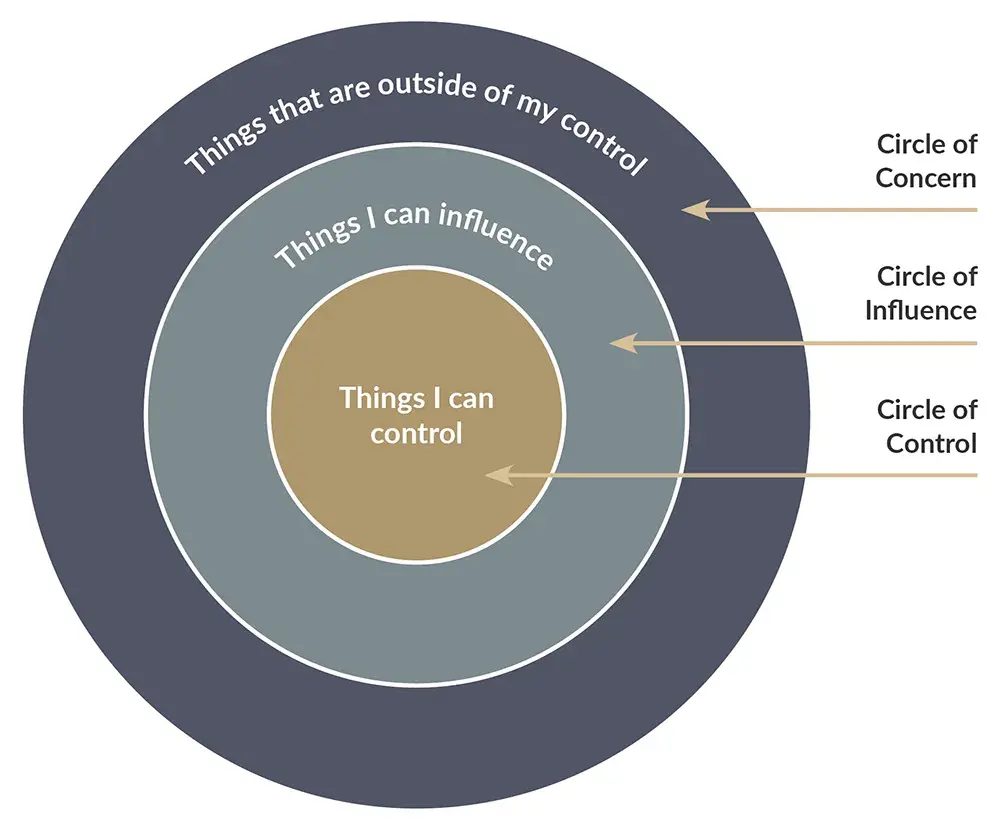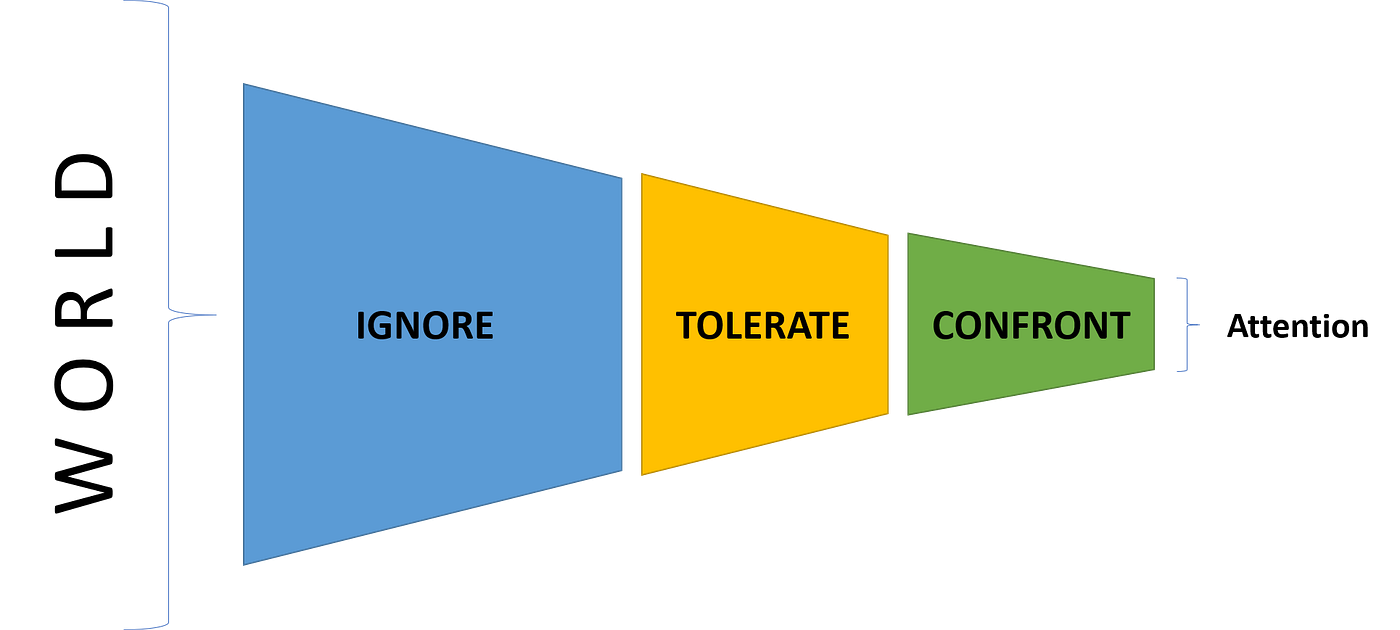Honing a Clear Mind
Honing a Clear Mind: A Design Thinker's Perspective
A clear mind is a crucial part of a design thinker's mindset. It involves consciously managing your mental energy by focusing on what you can control rather than getting bogged down by external events. This concept can be understood through two key frameworks: the Zone of Concern vs. Zone of Influence, and the ITC model.
The Zone of Concern vs. Zone of Influence
This framework helps you distinguish between things that bother you and things you can actually do something about.
- Zone of Concern: This is a broad, expansive zone that includes everything that worries you. It can be a local issue like a concern about your car, a personal issue like your business, or a global event like a war or asteroid. The more you expand this zone, the more helpless you will feel. Your thoughts, unlike your physical senses (touch, smell, sight, taste), have no limits and can travel to any topic, which can make it easy to get lost in a sea of concerns.
- Zone of Influence: This is a much smaller zone within your Zone of Concern. It includes only the things you have the power to act on and change. The key to a clear mind is to shrink your Zone of Concern and expand your Zone of Influence.
How to Manage Your Zones:
- Say "No" to Shrink Your Zone of Concern: Learn to be selective about what you engage with. Say "no" to things that drain your attention and energy without offering an upside. This selective approach applies to people, activities, books, and even entertainment.
- Say "Yes" to Expand Your Zone of Influence: Commit to things you can genuinely do better than others. Saying "yes" to these opportunities allows you to make a tangible impact and grow.
The Zen State: When your Zone of Concern and Zone of Influence overlap, you achieve a state of "Zen" or "flow." In this state, you are only concerned with what you can influence, like a tennis player focused solely on the ball, unconcerned with the score or crowd.
The ITC Model for Action and Reaction
When faced with a situation, a design thinker can use the ITC model to decide on the appropriate course of action.
- I stands for Ignore: Ignore things that are not worth your energy or time. This is the first and most powerful option. You should ignore the behavior, not the person, as a person's behavior is often influenced by their environment. Ignoring about 50% of the minor annoyances in your life frees up mental energy for what truly matters. You should ignore when there is no upside beyond ego.
- T stands for Tolerate: When you can't ignore something, you must tolerate it. This means absorbing the situation because there is a potential for personal growth. An example is a PhD student tolerating a guide's harsh feedback, knowing it will improve their work and lead to self-development. You should tolerate when there is an upside in terms of self-development.
- C stands for Confront: This is the last resort, reserved for situations that you cannot ignore or tolerate. Confrontation requires courage and should only be used when there is a massive potential upside. Confronting a cheating student in an exam hall is a good example because it upholds integrity, which has a high upside. However, confronting an aggressive stranger in traffic is not worth it, as the potential downside outweighs the upside. In a world of social media, it's often a better strategy to "mind your business" and speak up only when it makes a significant difference.



No Comments